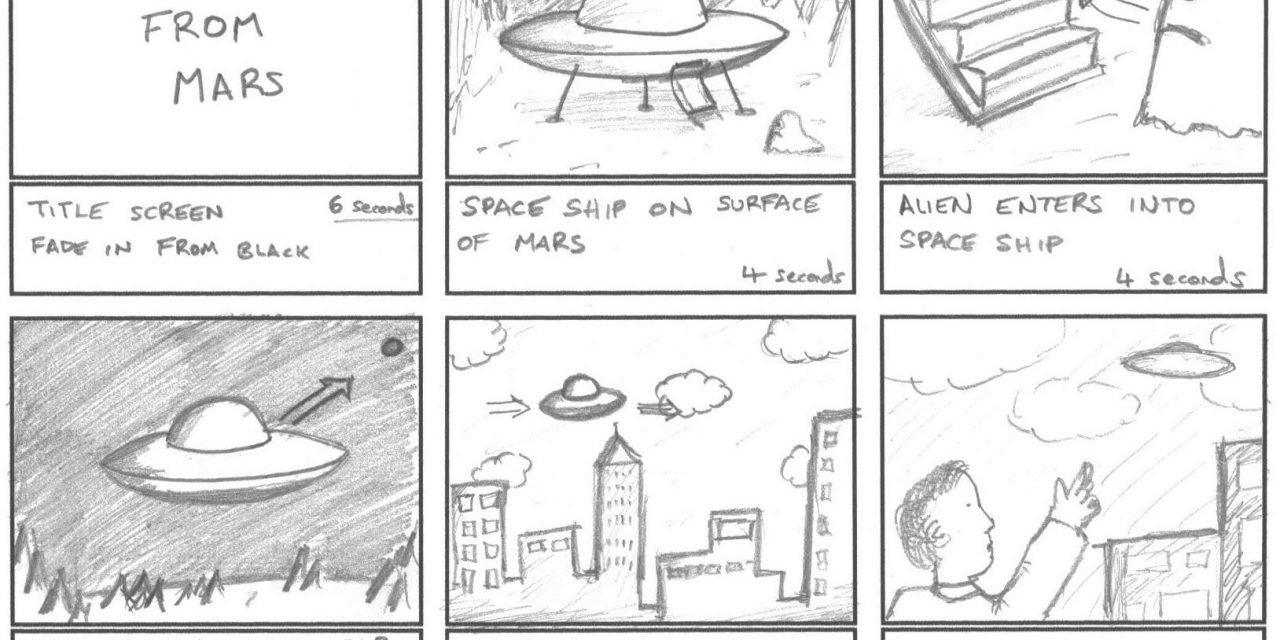- Name : Ruth Junike Harjono
- Class : 1 MMB B
- NRP : 4103191046
How to Make a Storyboard for Film
There’s an important step between ideation and creation for films, comic books, and other mediums that require planning out scenes: making a storyboard.
What Is a Storyboard?
A storyboard is a visual outline of a film (be it a short film or feature film) or animation. It’s an important part of the preproduction process and consists of a series of images that show everything that’s going to happen in your finished piece.
Many storyboards are hand-drawn, but some creators or animators choose to use storyboarding software. The finished result resembles a comic book or a graphic novel.
Why Is Storyboarding Important?
If you’re working with a script, you already know the flow of your project. The key is to translate that flow and new ideas from word form to image form. Each image on your storyboard needs to include enough information that someone who has never read your script can look at it and know what’s going on. But it shouldn’t contain too much information, as that will crowd out the relevant details.
- Think of the storyboard as the graphic novelization of your script, where each panel represents a new camera angle or a key moment in the action.
- The aim of the storyboarding process is twofold: to ensure that you get all the coverage you need on set to craft a coherent and exciting story in the editing room, and to do so in an economical way, so as to avoid spending time filming unnecessary shots or lose money in video production or special effects.
- Good storyboards can be supremely useful when directing big action sequences. Drawing out your shot list can be an organizing principle in the cacophony of producing complicated shoots. Storyboards become a precise map of what’s almost certain to be a hectic shoot day. You want to get this right.
How to Make a Storyboard in 4 Easy Steps
Follow these steps to create your first storyboard.
- Make a shot list. Take a scene from your script and make a shot list. How can particular camera angles tell the story, or make a moment more impactful? What can you reveal about your characters and the story via camera angles? Draw a rough sketch of your shot list.
- Sketch it out. Whether you’re working on a feature film or a short animation, choose one of the more complex sequences, and scope out a vision for the scene. List all of the shots that you anticipate needing as raw material, and then sketch them out in the squares of your storyboard, like a comic strip. If you’re not much of an artist, it’s fine to use basic shapes and stick figures on a piece of paper. But if you’re not getting the effect you want, you can work with a storyboard artist to make changes or map out a proposed sequence. If you need help finding an experienced and qualified artist, consider starting your search on Jorgen’s List, Upwork, or the public Facebook group “Frame Dump.”
- Fill in details. Your storyboard has to contain the most important elements of each scene. But while it’s a static image, the end result will be a moving video or animation that follows the entire storyline. With that in mind, be sure to indicate motion in your storyboard. For example, you can indicate the direction a person is walking with arrows. You’ll also want to include any props that will be present in the final product, as well as the camera angles and framing of each shot. A good rule of thumb is to include a general outline of all of the relevant details of each shot, without going too deep into distracting details.
- Add words. Once you’ve created the images, it might help to add additional words at the bottom of the images to give more context about what’s going on. This is a great place in the storyboard process to include anything that can’t be expressed in your simple drawings, like any voice over you plan to include.
What Are the Best Storyboard Templates and Programs?
If you have a few hundred bucks to spare, invest in screenwriting software. These tools take care of formatting your script for you so that you don’t have to fiddle with margins, spacing, page breaks, and other clunky word processing commands. These programs also feature many other tools to help you create storyboards, shot lists, schedules, and budgets.
Below are the top four storyboarding programs, in order of most expensive to least:
- Final Draft
- Movie Magic Screenwriter
- Fade In
- Celtx








Recent Comments